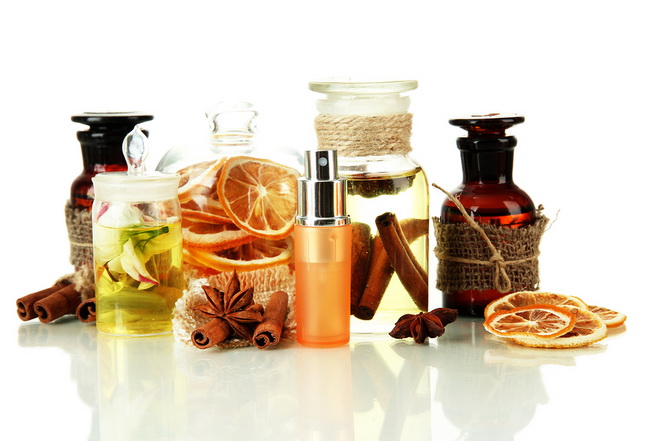- Make It Yourself Lavender Heart-Shaped Bath Bombs!
- 20 Things You Never Knew About “Down There”
- 12 Best Foods For Those Suffering From Arthritis Pain
- 12 Personal Hygiene Mistakes Almost Everyone Makes (Mom Never Told You About #4!)
- 15 Medicinal Plants And Herbs From The Cherokee People
- 12 Mind-Blowing Benefits Of Drinking Coconut Water During Pregnancy
- 12 Outstanding Winter Foods That Won’t Fatten You Up Like A Christmas Turkey
Simple Ways to Make Your Own Natural Perfumes

Photo credit: bigstock
Pay attention to where your 9’s and 10’s are. Most people find that their tastes fall into these categories:
- Florals – The scent of many flowers can be soft, sweet, and mellow. When they are properly balanced with other scents, they can be calming and pleasing. Many feminine scents begin with their bases in flowers such as roses, jasmine, and lily of the valley.
- Spicy/Woody/Earthy – Spices such as cinnamon and cloves, along with woodland types of scents such as cedar, oak, incense, and rain. Blended with other scents, these have a refreshing, energizing quality.
- Greens/Herbal – These are healthy, outdoor smells such as pine, citrus scents like lemons and limes, balsam. Rosemary and eucalyptus. Although these can be overpowering (think of those undiluted pine cleaners), when they are properly mixed they add a type of brisk edge. Many men’s perfumes have their bases in this green group.
- Nature/Animal/Musk – The natural smells of leather, honey, and musk can seem as if they are blunt and overpowering but when mixed with other oils and scents, these come across as exotic, primitive, and seductive.
Almost all perfumes have their bases in one of these four scent families. To provide a type of harmony, most of these scents are mixed or blended with other oils, to create those expensive perfumes you find in most department stores. You can use the same procedures, and elements, to make your own signature perfume.
After you have identified your favorite scents, you can buy these essential oils almost anywhere. All health food stores, natural food stores, or online stores sell these essential oils. Don’t buy just one; buy several of your favorites in your own scent “family”. For example, if you like flowers pick some rose, lavender, daffodil, and lilac essential oils. Then try picking one or two from a different scent family. You might want to try some combinations such as rose/cinnamon or jasmine/orange. You could also try rose/patchouli or lilac/cedar. These are just examples of some of the types of scents you should start experimenting with. See also top 10 essential oil you should have at home.
Take a look at some of these ideas for starters:
- Like florals? Try Jasmine/Ylang Ylang
- Prefer fruity? Try Orange/Bergamot
- Love Earthy? Try Musk/Vetiver
- Want Woodsy? Try Cedarwood/Sandalwood
- Looking for Herbal? Try Rosemary/Chamomile
- Want to spice it up? Try Clove/Ginger
- Love it sweet? Try Vanilla/Amber
Mix just a drop or two, put it on your wrist or the back of your hand. Now your nose is going to get overworked if you do this for too long, so try mixing two or three combinations per day until you find a few that you really like. You can also mix three or four oils if you want. Most sophisticated scents are mixes of several different oils. If you are planning on mixing more than two oils, you might want to write down what you are doing so if you hit on a sure winner, you won’t forget exactly how you got there!
Store your selections in small, dark colored bottles with lids, keeping them away from sunlight and extreme heat. If you keep your oils away from heat, air, and light, you won’t need a fixative. Use them sparingly as perfume. If you like, you can even put them in a diffuser and enjoy your favorite scent throughout the house.
Continue to Page 3
































